How Urban Sprawl and Invasive Species Have Changed the Face of Nuisance Bird Management
Oct 12, 2021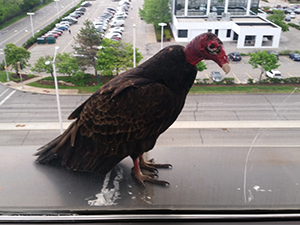
When Wild Goose Chase first started managing nuisance birds in 1998, there was just one target: the lovely black and white-cheeked Canada geese that hissed and honked as our border collies moved them off site.
Over the years, we have added other faces to our work: the appraising dusty-white faces of gulls, the big-eyed pigeon faces, and the cheeky-looking faces of house sparrows. These days, it seems we are adding new faces to the line-up at an ever-increasing pace, with a capacity for nuisance ranging from trespassing to littering, property damage and vandalism.
What Accounts for the Growing Number of Nuisance Birds?
- Urban Sprawl. As more office buildings, shopping malls, and homes go up, more natural bird habitat is lost. As we encroach into their habitat, they encroach into ours.
- Adaptation. Birds are smart. As the only dinosaurs to have survived the asteroid, birds have colonized every continent. Intelligence and adaptability has enabled them to not only thrive in developed places, but also to outwit traditional ways of pushing them out.
- Invasive Species. Many of the nuisance species we work with are not native to our area. Pigeons, European starlings, and house sparrows have managed to both encroach and out-compete against native birds, displacing species that then become nuisances themselves. In addition, invasive plants, insects, feral cats, and other threats are pushing native birds to seek refuge in human habitats to survive.
Five New Faces of Bird Management
- The Turkey Vulture. As highways provide fresh roadkill and the dark pavement creates thermals that help them soar, turkey vultures are becoming more common in urban areas. Tall buildings create a perfect vantage to wait for a meal and, in the meantime, weatherstripping smells good enough to rip out of windowsills and doors.
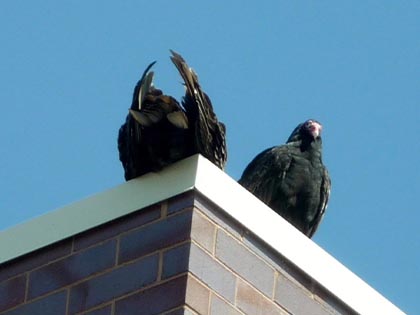
- The Red-winged Blackbird. One of the most common urban birds at feeders and around ponds, these feisty little warriors will defend their nesting grounds from anything that gets too close, often by dive bombing and mobbing in groups.
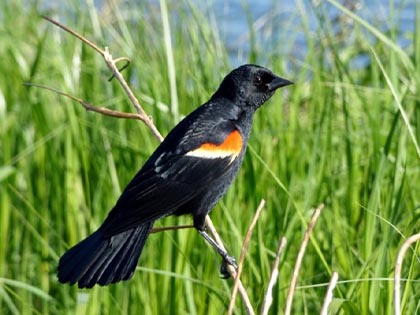
- The Wild Turkey. Turkeys very nearly went extinct not long ago, but strict management has enabled their dramatic comeback in our area: calls about turkeys attacking cars in urban areas, chasing people and pets, and pecking at store windows have skyrocketed. With birdfeeders providing plenty of tasty seeds and an absence of predators, these huge birds are back and making a name for themselves, literally in the case of one Wisconsin city.
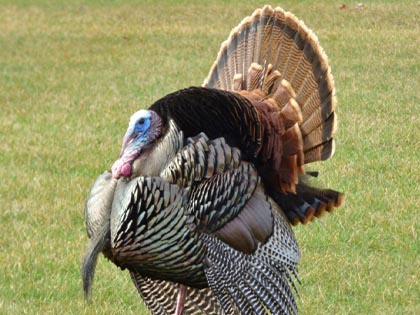
- The Swallows. Barn and cliff swallows love nesting in caves and natural overhangs. Urban development has removed most of those nesting areas. But swallows are smart and have adapted well to man-made overhangs by taking over our warehouses, loading docks, garages, and bridges. While for many it might be a joy to watch mom and dad swallows bring thousands of insects a day to their babies, the volume of droppings a colony of these birds create is a nasty and unhealthy drizzle that rains down on workers.

- The Double-Crested Cormorant. These fancy fish eaters are sometimes mistaken for the “Loch Ness Monster” with their snake-like heads and necks, and “monstrous” they can be. Their acidic droppings can destroy recreational water quality and kill mature tree stands where they nest and roost. They also decimate stocked ponds, sport fish and aquaculture rearing ponds, eating up to 90% of fish before moving on. As numbers and nesting colonies in our area increase, complaints grow as well.
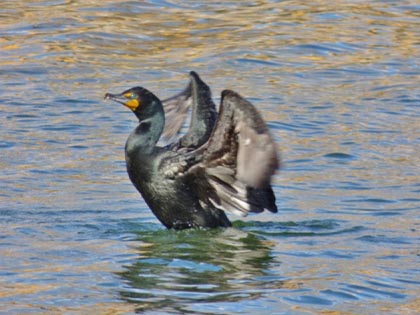
Whatever nuisance bird issue you are facing, Wild Goose Chase can help. We have experts in all bird issues and can customize a safe, humane, and biology-based solution for dealing with your bird conflicts.




 0
0
